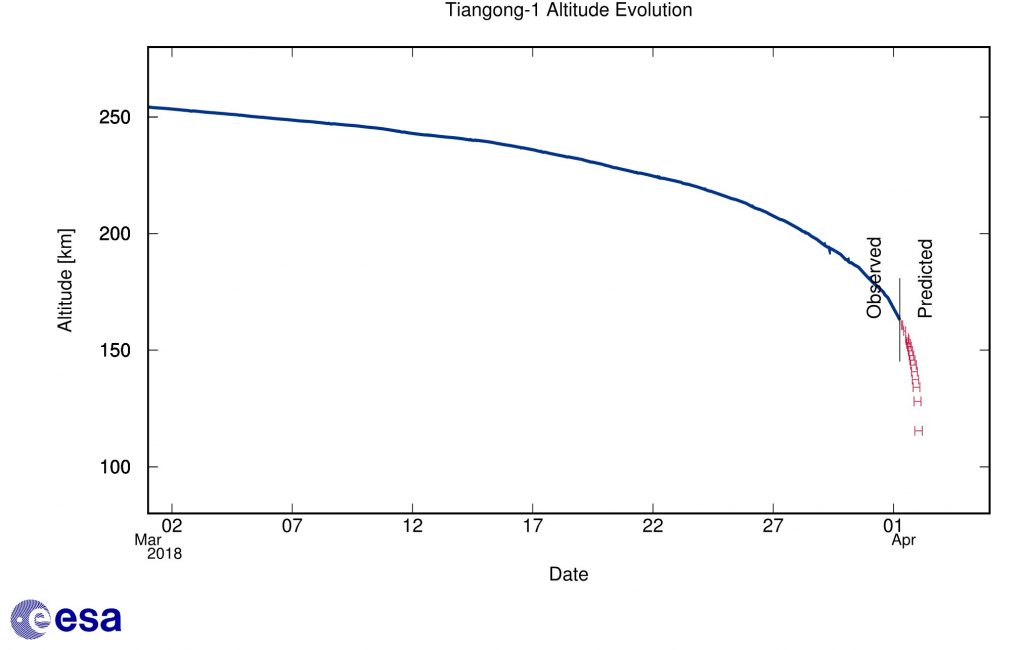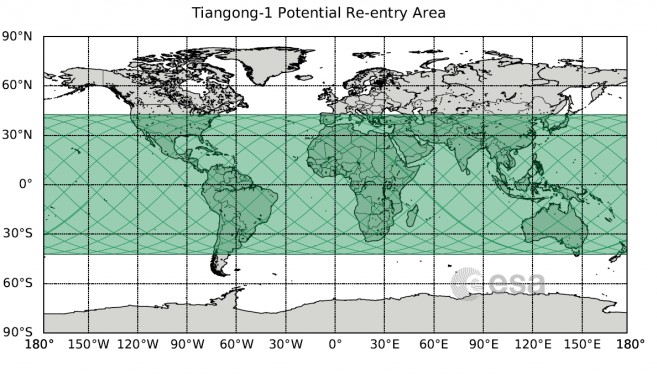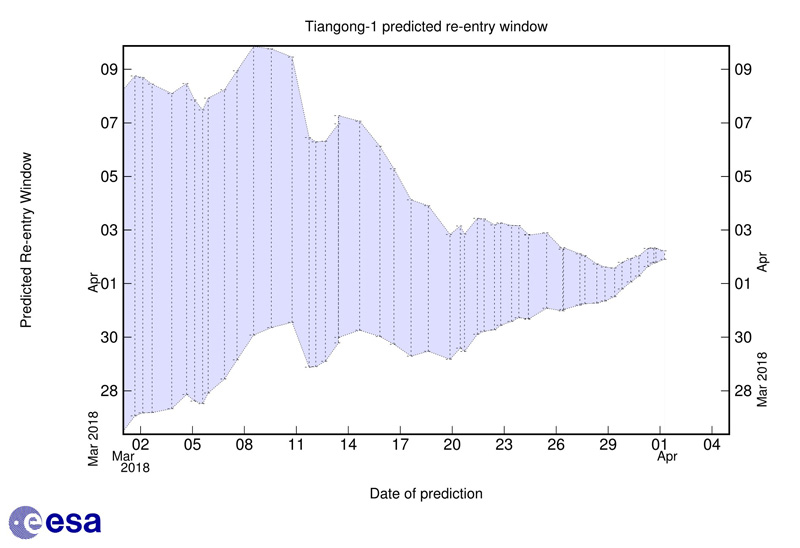But why was it so difficult to predict, and yet scientists knew (almost certainly) that debris wouldn’t land in the UK?
The Tiangong-1 held a human crew, and was launched by the China National Space Agency (CNSA) in 2011. It was successfully operated for two years, after which the taikonauts (Chinese astronauts) left to return to Earth and the space station put into a ‘sleep mode’ in 2013.
In a low Earth orbit at around 360 km above the surface of the Earth, though officially in space (higher than 100 km), there is still a very thin atmosphere, which slowed the 8.5 ton and 10 m x 3 m space station, bringing it closer to Earth. Every now and then, the thrusters of Tiangong-1 were fired to bring the orbit back up to counteract the drag of this super thin atmosphere.
In 2016, CNSA lost contact with Tiangong-1 and as a result they could no longer fire the thrusters for so-called ‘re-boost’ manoeuvres. As the spacecraft’s orbit slowed due to atmospheric resistance the height of its orbit lowered into thicker atmosphere, in turn slowing it down and lowering its orbit further. This process continued until eventually the spacecraft returned to Earth (see the below graph for how quickly the altitude begins to drop when lower than 200 km).
As CNSA were unable to communicate with Tiangong-1 and control this descent, we call this an ‘uncontrolled’ re-entry.

Credit: ESA
To know where Tiangong-1 could land, we need to look at what at first seem like odd lines on a map of the world.

You have probably seen these wiggly lines before—they are actually the orbit path that the spacecraft took as it passed over the Earth. But why do they look the way they do?
An orbit has something called ‘inclination’, which is the angle the orbit makes relative to the Equator. An object that has a 0 degrees orbit inclination will trace out a path over the equator only, while an orbital inclination of 90 degrees goes between the north and south poles.
The orbital inclination of Tiangong-1 was roughly 43 degrees, which meant that the most northern latitude the orbit would pass is through the very south of France, so unless something unexpected happened, Tiangong-1 wasn’t going to land near the UK—phew!
However, there was still a lot of the Earth where it could have landed…!
So at this point, we knew the spacecraft would land somewhere along these orbit lines, but to predict the exact re-entry point, we need to explain a bit more what is meant by uncontrolled re-entry.
Tiangong-1 was spinning as it dropped lower and lower into the atmosphere; check out these awesome radar images that show it spinning:
Its solar panels acted like sails, and as the spacecraft spun the amount of drag changed, making predicting where it will re-enter the atmosphere difficult. Predictions had to be refined over and over as the spacecraft’s orbit got lower and lower, and it was only around 24 hours before that scientists could confidently predict that it would re-enter the atmosphere on 2 April 2018 (the range in possible dates was around a week, as recently as the middle of March 2018).

Credit: ESA
Luckily, the Earth is mostly covered in ocean, and the vast majority of Tiangong-1’s orbit passed over bodies of water or uninhabited land, meaning chances were good that it would land in water or somewhere where people wouldn’t get hurt.
The spacecraft eventually did re-enter the atmosphere and broke up into lots of pieces, the majority of which burned up over the South Pacific, while the remaining parts landed in the ocean on 2 April at 00.15 UTC (the Pacific is absolutely massive, so the debris landing here isn’t too much of a surprise).
This isn’t the end of the Tiangong program, though. The Tiangong-2 space laboratory is currently in orbit and is CNSA’s ongoing platform for testing ahead of their proposed permanent space station, with the first module scheduled for launch in 2019.